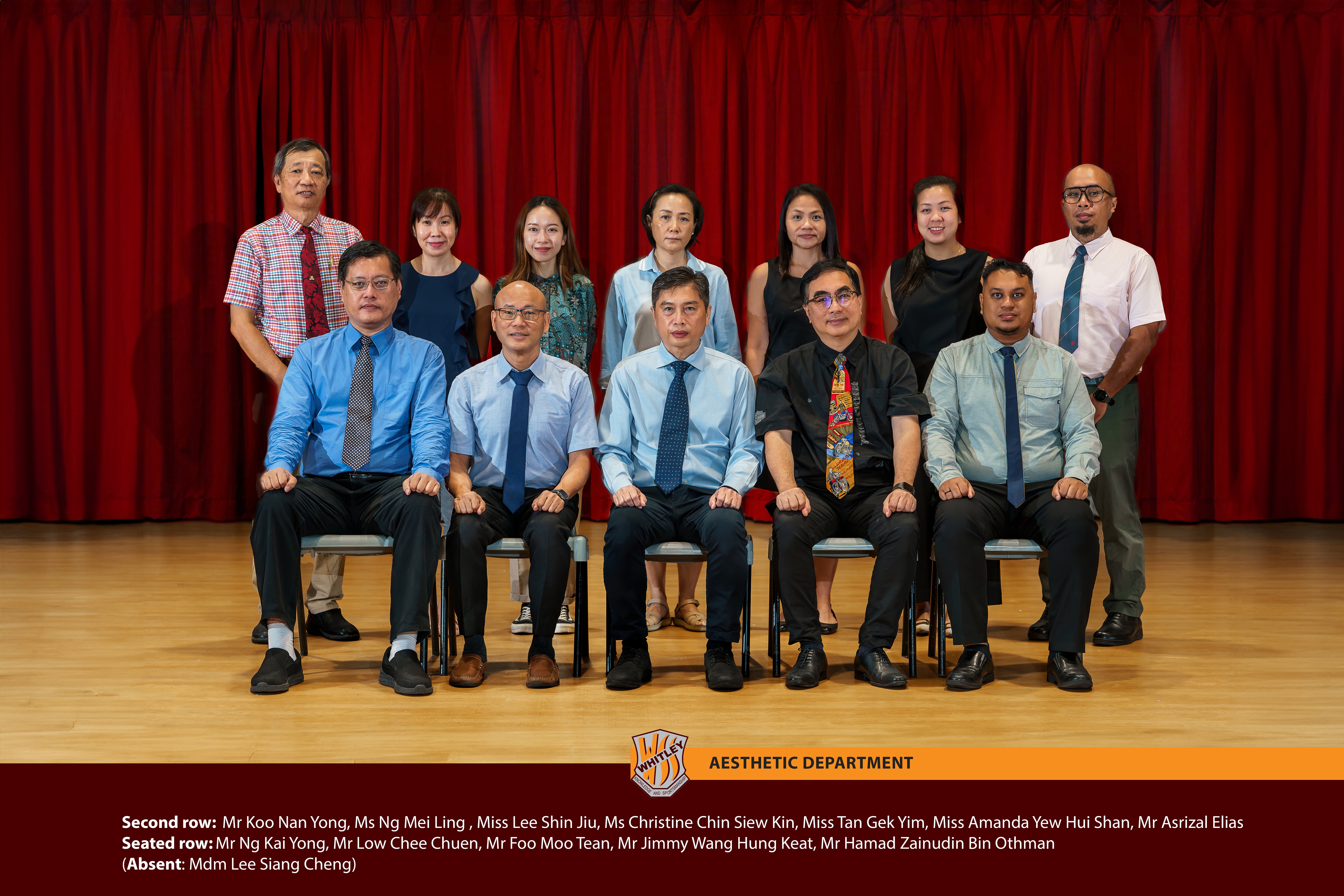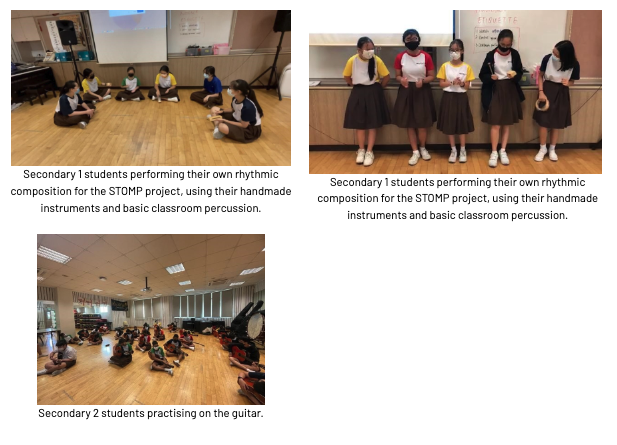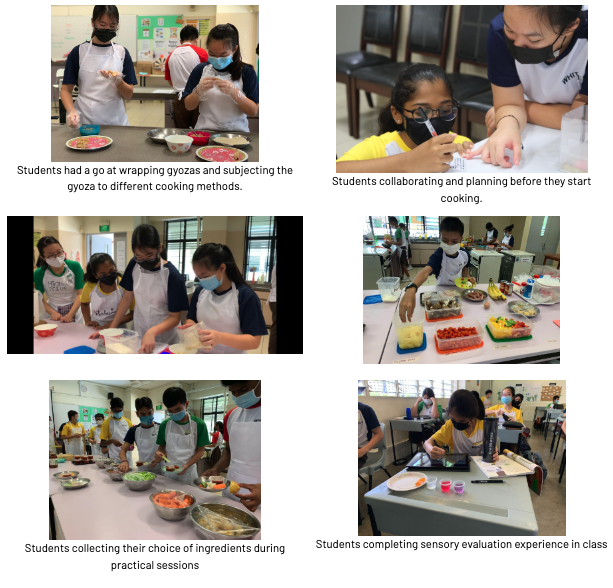Aesthetics
Aesthetics

Design and Technology Unit
Whitley Secondary School Aesthetics Department wants to help every Whitleyan to be innovative and develop a new way of thinking and doing things. This will allow students to visualise and provide practical design solutions for real-world contexts. To help our students achieve this, we train them in using a Design Process: Using thinking-and-doing process. This will allow students to be more thoughtful, and to experience the visual language in the design of solutions.
We also teach our students to do sketching and drawing: students will apply freehand sketching and drawing skills in designing, this will help students to visually explore, generate, reason and develop design solutions. We also train students to do 3D Manipulation: Students will manipulate 3D objects in the form of quick mock-ups and working with resistant materials to serve as tactile experiences to tinker, test and evaluate ideas, and to in the form of quick mock-ups and working with resistant materials to serve as tactile experiences to tinker, test and evaluate ideas, as the final design proposal. Students will also be expected to use what they have learned to create functional prototypes, and leverage on appropriate technology to fulfil the intended purpose.

Art Unit
Whitley Secondary School Aesthetics Department wants every Whitleyan to enjoy art and be equipped with basic art skills, communicate visually, and through that, be able to connect with society and culture. Our art lessons are developed closely in line with MOE art syllabus.
Students develop observation, drawing and rendering skills, composition techniques, brainstorm, research and processing skills, visual inquiry and art appreciation. At the Upper Secondary level, students develop independence and take ownership in art making processes through projects and coursework.
As an academic subject, we want to use art to develop every student holistically. Art develops students’ sense of identity and culture and build their capacity to be discerning in processing visual information. This skill would help them communicate effectively in the 21st Century.
To stretch our students and help them better appreciate art, students were sent for competitions such as the Draw my Stamp Story Art Competition 2021.

Music Unit
The Whitley Secondary School Aesthetics Department introduced the General Music Programme for the lower secondary students in Whitley Secondary School with the aims to inculcate in our students the ability to perform, create music, listen and respond to music using musical terms, and gain an appreciation for the subject within both local as well as global contexts.
In order to achieve these goals, our students learn and practise several musical instruments such as basic percussion, guitar, and keyboard. Students are also encouraged to explore musical creativity through song-writing and composing modules on e-platforms such as Google Song Maker and Bandlab. Through Whitley’s comprehensive 2-year General Music Programme, our students develop the propensity for creative expression and communication, develop an awareness for music in local and global cultures, and acquire a basic foundation for an informed and life-long involvement in music.

Nutrition and Food Science Unit
The Whitley Secondary School Aesthetics Department aims to empower our Nutrition & Food Science students to be health-conscious and discerning consumers, enabling them to better manage their lives in the present and the future. Through hands-on practical sessions in the kitchen, students benefit from experiential learning and have a higher engagement with the discipline. Students will also acquire practical skill sets that can help them in the future. The Covid-19 pandemic also did not rob students of their learning experiences as teachers still held lessons in the kitchen. Students were exposed to various cooking methods and basic culinary skills such as basic knife skills such as chopping, slicing and dicing, as well as cake and pastry making skills. Students also had sensory evaluation experiences in the classroom.
The general coursework for Secondary 1 students was to improve and make healthier a popular hawker dish while the Secondary 2 students were tasked to study the role of ingredients in cakes and deepen their ability to evaluate food options. Through these assignments, students were able to better appreciate and apply the knowledge and skills that they learnt during Nutrition & Food Science lessons.


